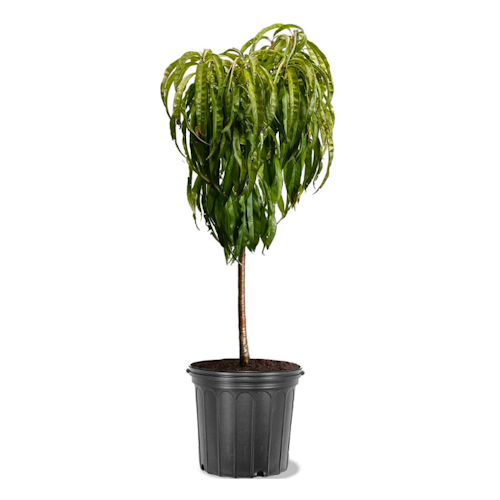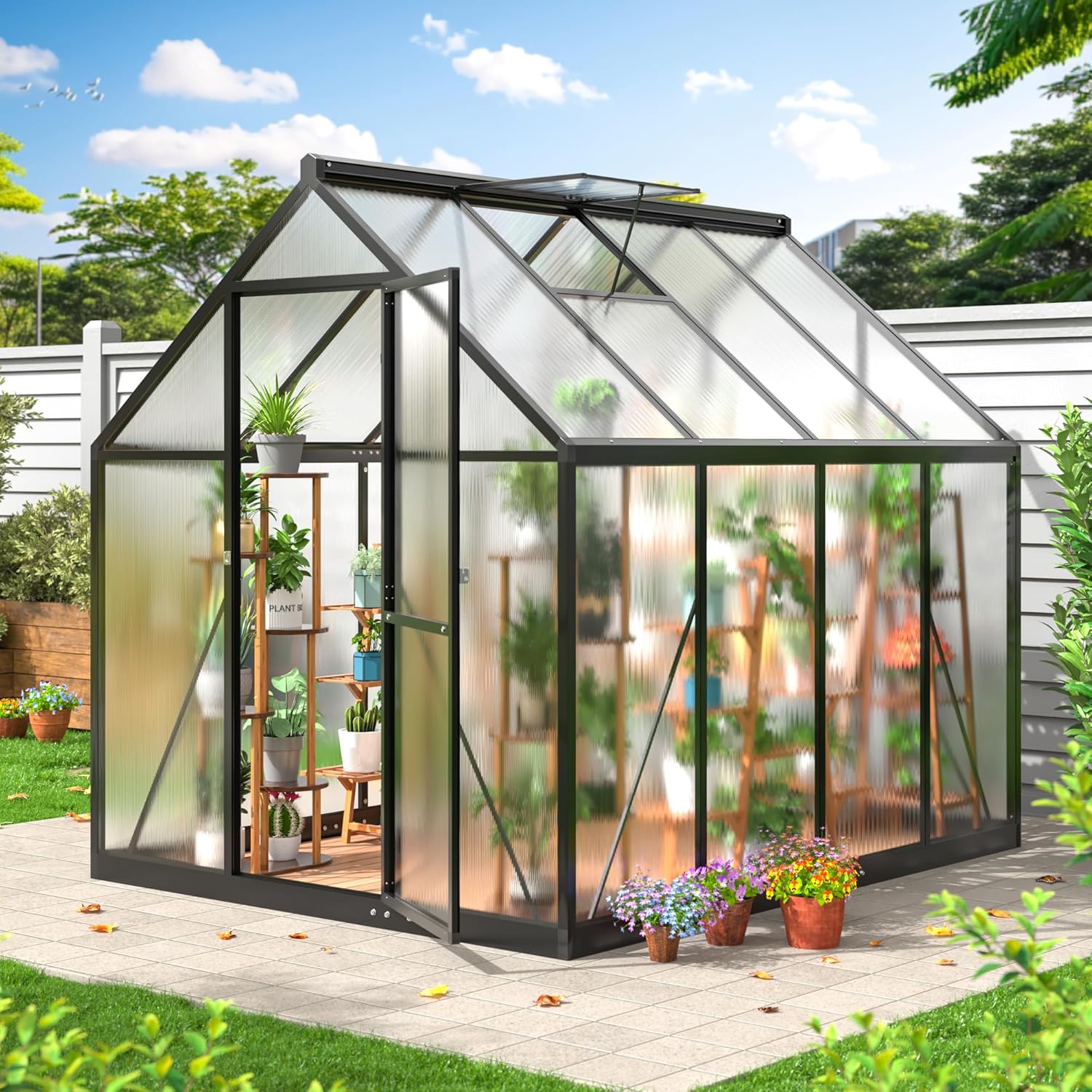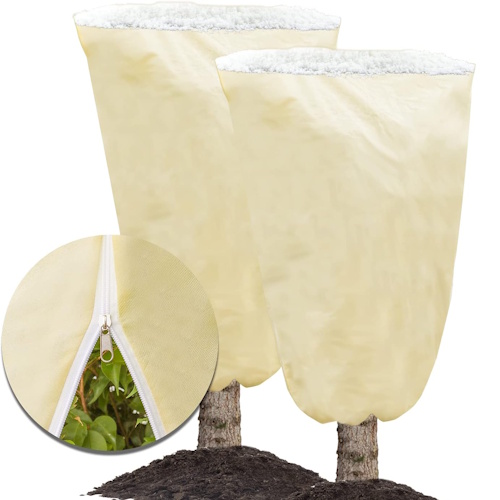This Victorian Garden Staple is the Secret to Bumper Peach Harvests in Cold, Wet Climates – It Prevents Leaf Curl, Pest Problems, and Frost Damage
At Gravetye Manor in Sussex, England, the peach glasshouse is a historic solution that continues to make tricky fruit growing easy
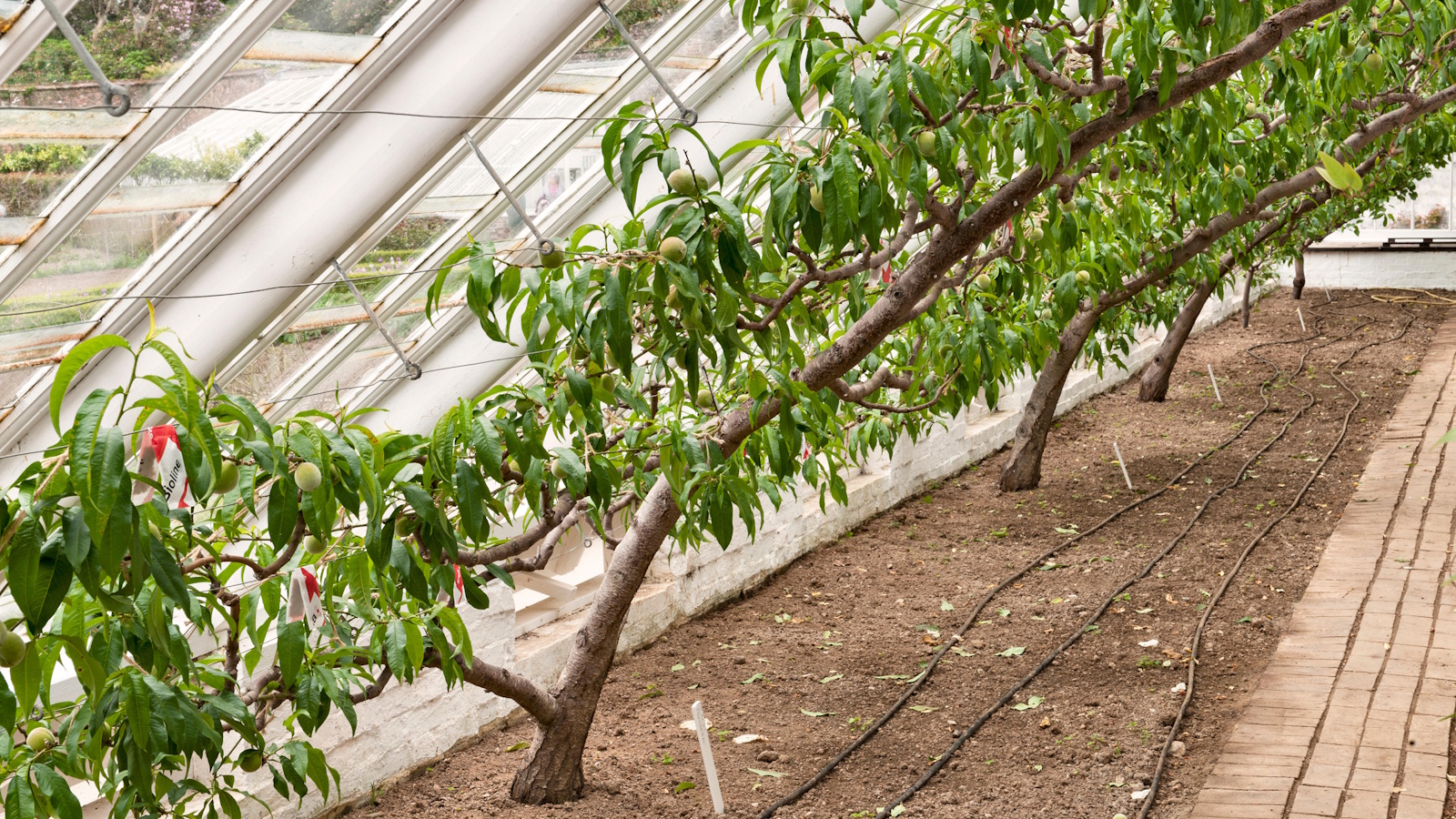

For those living in colder, wetter climes, the idea of growing your own peaches seems like something of an unachievable dream. But what if I told you there's one hack that dates back to the Victorian era, allowing the rainiest of regions to have homegrown, fresh peaches every year?
It's a technique that has been used at Gravetye Manor in Sussex, England, since world-renowned horticulturalist William Robinson acquired the property in 1884. I had the privilege of recently visiting this astounding Elizabethan property, where Head Gardener Tom Coward let me in on some secrets of the garden's incredible success with growing peaches.
It's all to do with where these trees are located: a Victorian glasshouse. And while growing peach trees in a greenhouse seems like a simple solution, it's only when you look at all the things it protects against, from leaf curl to frost, that you can appreciate just how problem-solving this Victorian horticultural staple is.
Gravetye Manor's Victorian Peach Glasshouse
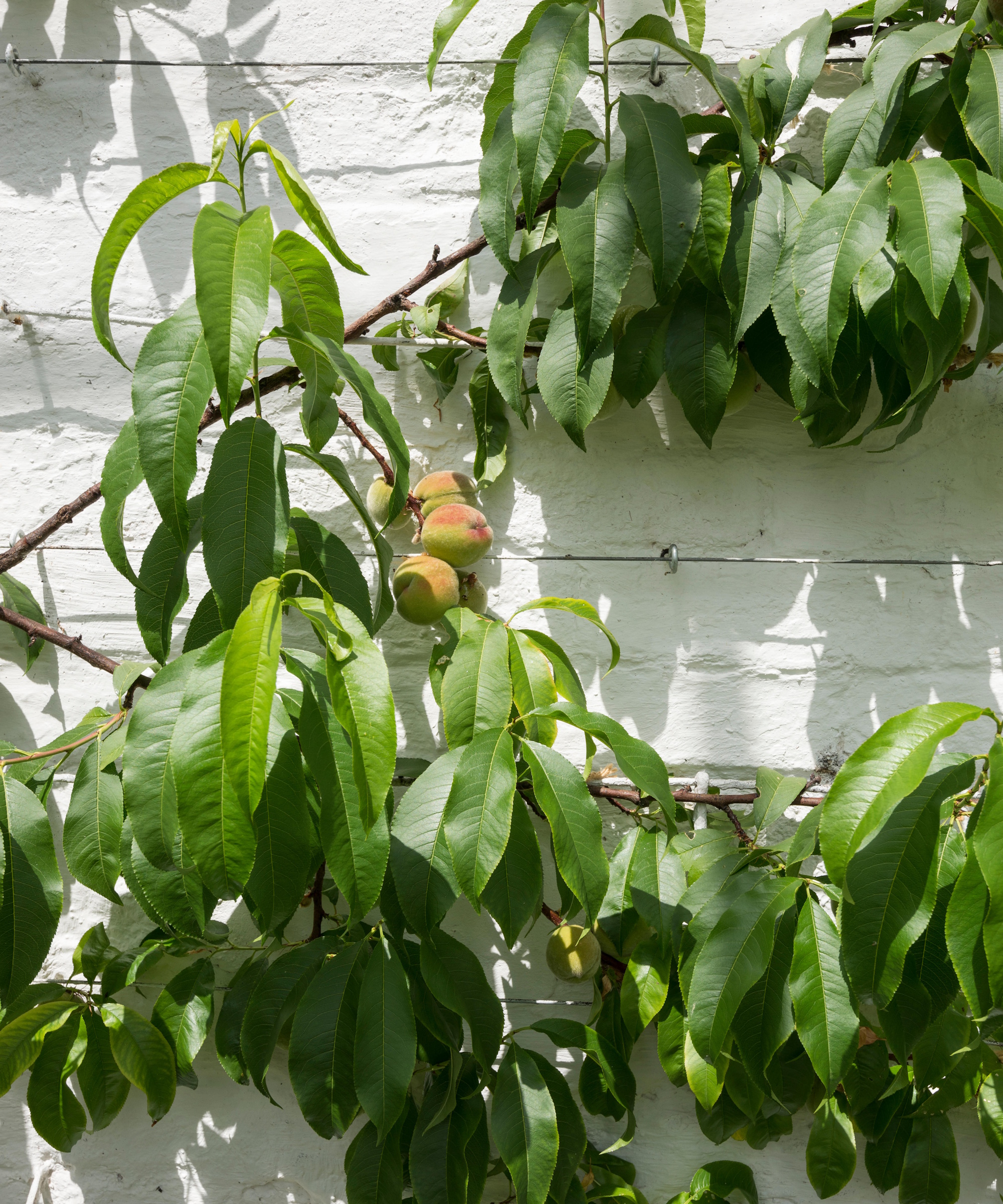
'We plant peach trees out of tradition,' says Tom Coward. 'William planted peaches and it nods to Victorian growing by using the glasshouses.'
William Robinson was an influential garden writer and horticulturist. His move to Gravetye Manor in 1884 was the beginning of a 50-year garden transformation, whereby he used the 1000+ acres of land to bring his horticultural visions to life.
Today, his vision endures through the dedicated team of gardeners at Gravetye, with an impressive kitchen garden, flower garden, bulb meadow, and more. One of the biggest highlights: the fruit trees.
'You can grow peaches outside here and we've got one growing outside in our walled kitchen garden on the south wall,' Tom says.
Design expertise in your inbox – from inspiring decorating ideas and beautiful celebrity homes to practical gardening advice and shopping round-ups.
'But, the thing about peaches in this country is they get a disease called peach leaf curl if it's been very wet,' he adds.
Peach leaf curl is a fungal disease that causes leaves to become distorted and turn red, often resulting in curling. This subsequently weakens the plant and hinders fruit production. It's worsened by excess rainfall because it allows the fungal spores to spread and creates a moist environment for the disease to thrive in.
This is a problem for chillier, wetter areas of the US, too, with peach trees generally being best-suited to US hardiness zone 6 to zone 8. Although this does depend on the variety – you can find a peach tree for your hardiness zone at Nature Hills.
At Gravetye, this issue is prevented by simply using a Victorian glasshouse. Inside, four impressive peach trees are found growing in beds, including the varieties 'Amsden June' and 'Red Haven.'
'By putting them under glass, you don't get peach leaf curl. You get high-quality fruit early in the season, and you can keep the squirrels away,' says Tom.
'The blossom also never gets frosted, which of course can stop a peach tree fruiting,' he continues. 'I find this is the way to have the best flavor of peach, as they can ripen just fine under glass while still attached to the tree.'
The glasshouse here dates back to William's time, though a restoration in 2012 returned it to pristine condition.
Glasshouses went through a boom during the Victorian era due to a number of reasons, including technological advances, a repeal of the glass tax, making materials more accessible, and innovations in ventilation, heating, and glazing, allowing tropical plants to be grown in this sort of environment.
This growing tradition continues at Gravetye Manor, allowing them to harvest peaches reliably every summer.

Tom has worked at Gravetye Manor since 2010, helping with major restorations of the garden. He has been a gardener since age 15 with a notable previous role at Great Dixter in East Sussex, England.
Top Tips for Growing Peach Trees in a Greenhouse
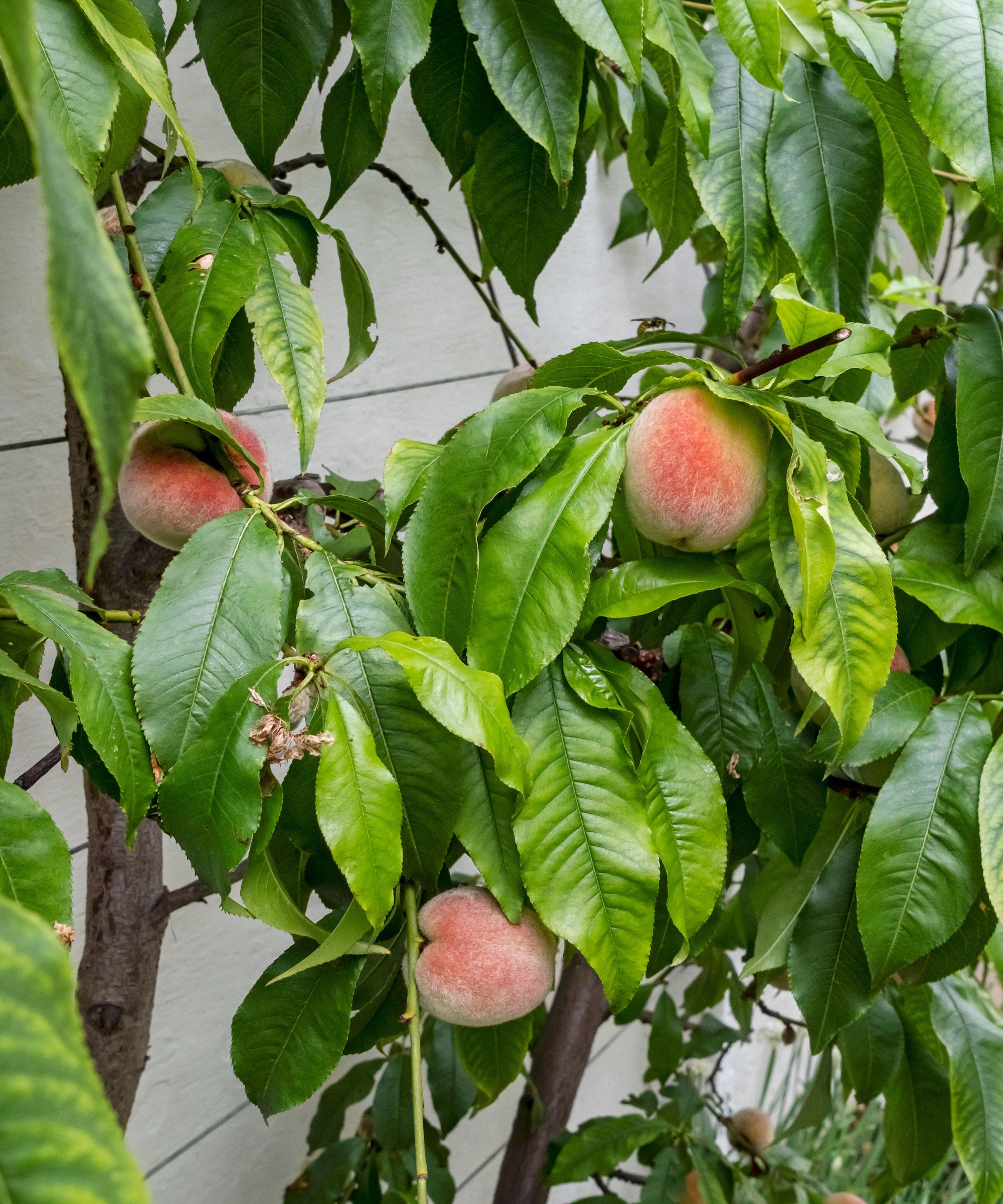
Of course, a glasshouse can be costly and space-consuming. But, if you have space for a sizeable greenhouse, you can use this trick in your backyard with compact peach trees and fruit tees to grow in pots.
If you do have the room to plant peach trees in the ground in a greenhouse, make sure to use a well-draining soil type, as they don't enjoy sitting in waterlogged soil.
It can also be helpful to train your peach trees for better ventilation, such as oblique cordon training, fan or espalier, if you have an appropriate wall. Pruning your peach tree is essential for training.
When growing peach trees in a greenhouse, it's also important to ventilate your greenhouse by opening vents and windows. This will reduce the likelihood of fungal diseases and prevent overheating in summer, which can stress your tree and hinder your ability to get a peach tree to fruit.
If you're wondering when to harvest peaches, look for signs like the fruit turning yellow and blushing. It should also give a little when you put pressure on it, and it should have a sweet aroma. The typical harvesting season is through summer, though, as Tom points out, when growing under cover, you are more likely to harvest earlier.

Tenielle is a Gardens Content Editor at Homes & Gardens. She holds a qualification in MA Magazine Journalism and has over six years of journalistic experience. Before coming to Homes & Gardens, Tenielle was in the editorial department at the Royal Horticultural Society and worked on The Garden magazine. As our in-house houseplant expert, Tenielle writes on a range of solutions to houseplant problems, as well as other 'how to' guides, inspiring garden projects, and the latest gardening news. When she isn't writing, Tenielle can be found propagating her ever-growing collection of indoor plants, helping others overcome common houseplant pests and diseases, volunteering at a local gardening club, and attending gardening workshops, like a composting masterclass.
